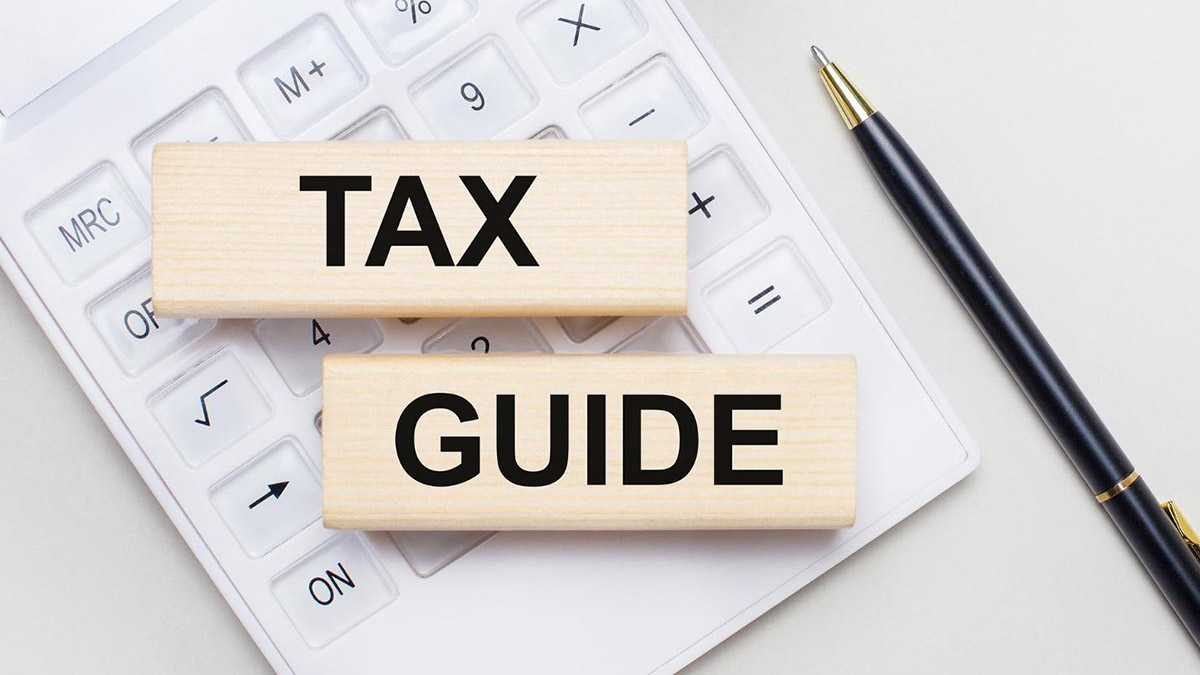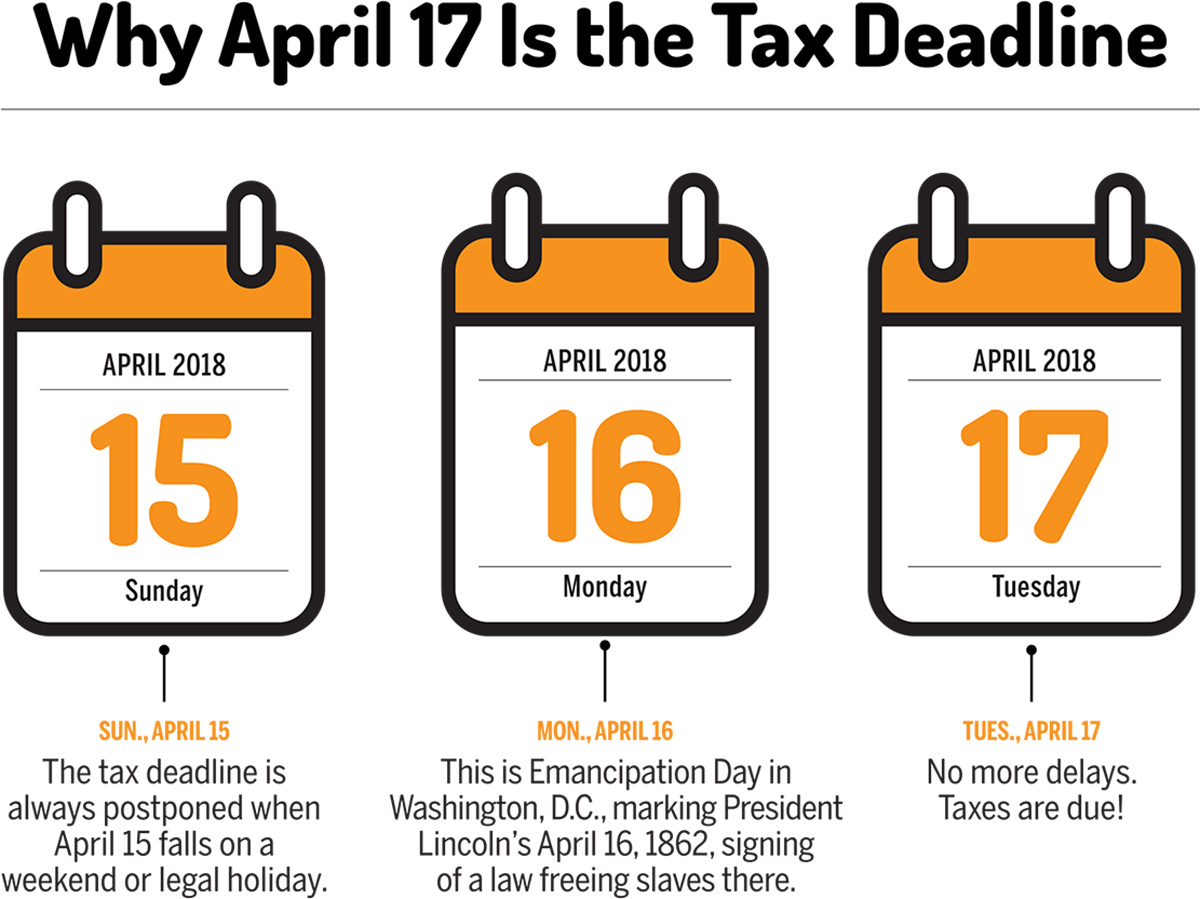Home>Finance>How To File A Sales Tax Return And What Is The Procedure


Finance
How To File A Sales Tax Return And What Is The Procedure
Published: October 28, 2023
Learn how to file a sales tax return and the step-by-step procedure for smooth compliance. Simplify your finance with our expert guidance.
(Many of the links in this article redirect to a specific reviewed product. Your purchase of these products through affiliate links helps to generate commission for LiveWell, at no extra cost. Learn more)
Table of Contents
Introduction
Welcome to the world of sales tax returns! Whether you’re a small business owner or someone who sells products or services online, understanding the process of filing a sales tax return is essential. Sales tax is a consumption tax imposed by the government on the sale of goods and services. As a responsible taxpayer, it’s important to know how to navigate the complexities of sales tax regulations and ensure compliance.
This article will guide you through the procedure of filing a sales tax return, whether online or by mail. We will cover everything from understanding the purpose of a sales tax return to the important deadlines and potential penalties for non-compliance. By the end of this article, you will have a comprehensive understanding of the process, allowing you to confidently file your sales tax return.
Before we delve into the details, it’s worth noting that sales tax laws can vary from state to state and even change over time. Therefore, it’s crucial to consult the specific guidelines provided by your state’s tax authority for the most accurate and up-to-date information. Now, let’s embark on our journey to demystify the process of filing a sales tax return!
Understanding Sales Tax
Sales tax is a consumption tax imposed by state and local governments on the purchase of certain goods and services. It is typically calculated as a percentage of the selling price and collected by businesses at the point of sale. The purpose of sales tax is to generate revenue for the government to fund public services and infrastructure projects.
Each state has its own sales tax rate, which can range from a few percent to over 10%. Additionally, some local jurisdictions may impose their own sales tax, making the overall rate higher in certain areas. It is important to know the sales tax rate applicable to your specific location to ensure accurate collection and reporting.
Not all states impose sales tax on the same goods and services. While most tangible goods are subject to sales tax, certain necessities like food, prescription drugs, and clothing may be exempt or taxed at a reduced rate in some states. Some states also impose sales tax on services such as dining at a restaurant or staying at a hotel. Understanding the specific taxability rules in your state is crucial to determine which transactions should be included in your sales tax return.
It’s worth noting that sales tax is typically a pass-through tax, meaning businesses collect it from consumers and remit it to the taxing authority. As a business owner, it’s your responsibility to charge and collect the correct amount of sales tax from your customers.
Now that we have a basic understanding of what sales tax is, let’s move on to the purpose of filing a sales tax return and why it’s important.
Purpose of Sales Tax Return
The purpose of filing a sales tax return is to report and remit the sales tax that you have collected from your customers to the appropriate taxing authority. Essentially, it is a way for businesses to fulfill their legal obligation to pay sales tax on the goods and services they have sold.
By filing a sales tax return, you are providing a detailed breakdown of your sales activities, including the total amount of sales made and the corresponding sales tax collected. This information allows the taxing authority to verify that you have accurately calculated and collected the correct amount of sales tax.
Aside from ensuring compliance with tax laws, filing a sales tax return also serves as a record-keeping tool for your business. The information on your sales tax return can be beneficial for various purposes, such as preparing financial statements, analyzing sales trends, and tracking your tax liability.
In addition to reporting and remitting sales tax, the sales tax return may also require you to provide information about any sales tax exemptions or deductions that you are eligible for. This ensures that you are taking advantage of any applicable tax benefits and not overpaying on your sales tax liability.
Keep in mind that sales tax regulations and requirements can differ from state to state. The specific information required on the sales tax return will depend on the guidelines set forth by your state’s taxing authority. It is essential to review the instructions provided by your state to ensure accurate completion of your sales tax return.
Now that we understand the purpose of a sales tax return, let’s move on to the next step: gathering the required documents.
Gathering Required Documents
Before you begin the process of filing your sales tax return, it’s important to gather all the necessary documents and information. This will ensure that you have accurate and complete records to report your sales and calculate the sales tax owed. Here are the key documents you will need:
- Sales Records: Collect your sales records for the reporting period covered by the sales tax return. This includes invoices, receipts, cash register tapes, or any other documentation that provides details of your sales transactions.
- Purchase Records: Keep track of your purchase records, which will help you determine the cost of goods sold and any applicable sales tax deductions or exemptions. Maintain a record of invoices or receipts for the goods purchased.
- Exemption Certificates: If you have made sales to customers who are exempt from sales tax, such as wholesalers or nonprofit organizations, you may need to collect and keep valid exemption certificates. These certificates validate the customer’s exemption status and provide evidence for any exempt sales.
- Shipping and Delivery Documentation: If you ship products to customers, make sure to maintain documentation related to shipping and delivery. This includes shipping labels, tracking numbers, and any other relevant proof of shipment or delivery. This information may be required to verify that the sales occurred within or outside the jurisdiction’s taxable boundaries.
Having all these documents organized and easily accessible will streamline the process of completing your sales tax return. It will also help you accurately report your sales and calculate the sales tax owed, reducing the risk of errors or omissions.
It’s a good practice to maintain these records for several years as they may be needed for auditing purposes or to resolve any disputes with the taxing authority. Electronic record-keeping systems can be particularly helpful in organizing and retaining important documents while reducing clutter.
Now that you have gathered the necessary documents, it’s time to move on to the next step: filing your sales tax return. In the following sections, we will explore the process of filing your return online and by mail.
Filing Sales Tax Return Online
Filing your sales tax return online offers convenience and efficiency. Many states provide an online portal or system specifically designed for businesses to file their returns electronically. Here’s a step-by-step guide to help you navigate the process:
- Create an Account: Visit your state’s tax department website and create an account if you haven’t done so already. You may need to provide relevant business information and register for a sales tax account.
- Access the Online Portal: Log in to your account and navigate to the section for filing sales tax returns. Look for options such as “File a Return” or “E-File.” This will take you to the online filing portal.
- Select the Reporting Period: Choose the reporting period for which you are filing the sales tax return. Typically, this will be the specific month, quarter, or year you are reporting on.
- Enter Sales and Sales Tax Information: Provide accurate details of your sales and sales tax collected during the reporting period. This may include the total sales amount, taxable sales, exempt sales, and the corresponding sales tax collected.
- Review and Confirm: Double-check all the information you have entered to ensure accuracy. Mistakes or inaccuracies can cause issues and may lead to penalties or additional audits. Take the time to review your return and make any necessary corrections before submitting.
- Submit the Return: Once you are confident that all the information is correct, submit your sales tax return electronically. The online system will provide a confirmation or receipt to acknowledge that your return has been successfully filed.
- Make Payment: If you have sales tax owing, you will typically be prompted to make a payment electronically. Most online portals accept various payment methods, such as credit card or electronic funds transfer (EFT). Follow the instructions provided to complete the payment process.
After submitting your sales tax return online and making the payment, it’s a good practice to save a copy of the confirmation or receipt for your records. This serves as proof that you filed and paid your sales tax on time.
Filing your sales tax return online not only saves time but also reduces the risk of manual errors. The online system often includes built-in calculators and validation checks to minimize mistakes and ensure accurate reporting.
In the next section, we will explore the alternative method of filing your sales tax return by mail.
Filing Sales Tax Return by Mail
If you prefer or are required to file your sales tax return by mail, the process involves a few additional steps compared to filing online. Here’s a guide to help you navigate the process:
- Obtain the Paper Forms: Visit your state’s tax department website and download the appropriate sales tax return form for the reporting period you are filing. Make sure to use the most up-to-date version of the form to ensure compliance.
- Print and Fill Out the Form: Print the form and fill out all the required information regarding your sales and sales tax collected during the reporting period. This includes details such as the total sales amount, taxable sales, exempt sales, and the corresponding sales tax collected. Follow the instructions provided on the form to ensure accuracy.
- Attach Supporting Documents: Gather and attach any supporting documentation required by your state, such as sales receipts, invoices, or exemption certificates, to validate the information reported on the form. Be sure to organize and label the supporting documents to make it easier for the taxing authority to verify your sales activities.
- Double-Check and Review: Before submitting your sales tax return, carefully review all the information on the form to ensure accuracy. Look for any mistakes or omissions that could potentially lead to issues or penalties. It’s a good idea to have another person review the form as well to catch any errors that you may have missed.
- Make a Copy: Once you are confident that the information on the form is accurate, make a copy of the completed sales tax return and all attached documents for your records. This ensures that you have a backup in case the mailed version gets lost or misplaced.
- Mail the Return: Place the completed sales tax return and attached documents in an envelope and securely mail it to the address provided on the form or on the tax department’s website. It’s recommended to use certified mail or a reputable courier service that provides tracking to ensure that the return reaches its destination.
- Make Payment: If you have sales tax owing, check the instructions provided on the form or on the tax department’s website for payment options. Typically, you will need to include a check or money order payable to the taxing authority along with your mailed return. Be sure to follow the instructions carefully to avoid any potential payment issues.
After mailing your sales tax return, keep a record of the date it was sent and any tracking information that can serve as proof of submission. This will help resolve any potential disputes or inquiries in the future.
Although filing your sales tax return by mail may take a bit more time and effort compared to filing online, it is a viable option for those who prefer or are required to use this method. Just ensure that you complete and mail your return well before the deadline to avoid any late filing penalties or issues.
In the next section, we will explore how to calculate the sales tax owed on your sales tax return.
Calculating Sales Tax Owed
Calculating the sales tax owed on your sales tax return involves accurately determining the amount of sales tax that should have been collected from your customers during the reporting period. Here’s a step-by-step process to help you calculate the sales tax owed:
- Identify Taxable Sales: Review your sales records and identify the total amount of taxable sales made during the reporting period. These are the transactions on which sales tax should have been collected from your customers.
- Determine the Sales Tax Rate: Consult the sales tax rate applicable to your location. This can usually be found on your state’s tax department website or in the guidelines provided with the sales tax return form. Calculate the sales tax rate as a percentage.
- Calculate Sales Tax Collected: Multiply your total taxable sales by the sales tax rate to calculate the total amount of sales tax that should have been collected from your customers. This represents the sales tax liability for the reporting period.
- Consider Exemptions and Deductions: Take into account any sales tax exemptions or deductions that apply to your specific business or sales activities. These might include exemptions for certain products or services, sales to tax-exempt entities, or sales in designated tax-free periods. Deduct these amounts from the sales tax liability calculated in the previous step.
- Finalize Sales Tax Owed: Once you have accounted for any applicable exemptions or deductions, you will arrive at the final sales tax owed. This is the amount that should be reported on your sales tax return as the sales tax collected from your customers during the reporting period.
It’s important to note that accuracy in calculating the sales tax owed is crucial to avoid underpayment or overpayment. Underpayment could lead to penalties or audits by the taxing authority, while overpayment means you are paying more than necessary.
If you are uncertain about the sales tax rate or the eligibility of certain transactions for exemptions or deductions, it’s recommended to consult with a tax professional or your state’s tax department for guidance. They can provide specific information and help ensure that your calculations are accurate.
In the next section, we will explore the process of reporting and paying the sales tax on your sales tax return.
Reporting and Paying Sales Tax
Once you have calculated the sales tax owed, the next step is to report and pay the sales tax to the appropriate taxing authority. Here’s how you can effectively report and fulfill your sales tax obligations:
- Complete the Sales Tax Return Form: Fill out the sales tax return form provided by your state’s tax department. Provide accurate and detailed information regarding your sales activities, including the total sales amount, taxable sales, and sales tax collected during the reporting period. Follow the instructions provided on the form to ensure accuracy.
- Report Exemptions and Deductions: If you are eligible for any sales tax exemptions or deductions, make sure to indicate them on the sales tax return form. Provide the necessary documentation or information to support the exemptions or deductions claimed. This ensures that you are not overpaying your sales tax liability.
- Double-Check the Information: Before submission, carefully review all the information on the sales tax return form. Check for any errors or omissions that could potentially cause issues. It’s advisable to have another person review the form as well to ensure accuracy.
- Submit the Sales Tax Return: Once you are confident that the information is accurate, submit the sales tax return to the appropriate taxing authority. If filing electronically, follow the instructions provided on the online system. If filing by mail, send the return to the designated address provided on the form or the tax department’s website.
- Make the Payment: If you have sales tax owing, follow the guidelines provided by your state’s tax department to make the payment. Typically, you will need to submit the payment along with your sales tax return. Accepted payment methods may include electronic funds transfer (EFT), credit card, or check. Ensure that you include the correct amount and follow the instructions carefully to avoid any payment issues.
- Keep Copies of Documents: After filing and making the payment, make copies of the sales tax return form and any supporting documents for your records. This includes receipts, invoices, exemption certificates, and proof of payment. Keeping organized records helps with future reference, audits, or disputes with the taxing authority.
- Comply with Filing Frequency: Depending on your business and sales volume, you may be required to file sales tax returns on a monthly, quarterly, or annual basis. Make sure to comply with the designated filing frequency to avoid late filing penalties. Mark the filing deadlines on your calendar to ensure timely compliance.
Reporting and paying your sales tax accurately and on time is crucial to maintaining compliance with the tax laws and avoiding penalties or unnecessary audits. It’s recommended to keep track of your sales and sales tax activities throughout the reporting period, ensuring that your records are up-to-date and accurate.
In the next section, we will discuss important deadlines and potential penalties associated with filing sales tax returns.
Important Deadlines and Penalties
Understanding the deadlines for filing your sales tax returns is crucial to avoid penalties and stay in compliance with the tax laws. Failure to meet these deadlines can result in monetary fines and other consequences. Here’s what you need to know:
- Filing Deadlines: Each state has its own set of deadlines for filing sales tax returns. These deadlines can vary based on the frequency of filing, such as monthly, quarterly, or annually. It’s important to familiarize yourself with the specific deadlines set by your state’s tax department. Ensure that you submit your sales tax return on or before the due date to avoid penalties.
- Late Filing Penalties: If you fail to file your sales tax return by the deadline, most states impose penalties, which are typically calculated as a percentage of the sales tax owed. These penalties can accrue daily or monthly until the return is filed. The longer you delay filing, the more penalties you may incur.
- Late Payment Penalties: If you have sales tax owing and fail to make the payment by the due date, additional penalties may apply. These penalties are typically a percentage of the unpaid tax amount and can increase over time. It’s essential to submit the payment on or before the deadline to avoid incurring late payment penalties.
- Interest Charges: In addition to penalties, the taxing authority may also charge interest on any unpaid sales tax amounts. The interest rate is usually determined by the state and accrues from the original due date until the tax is paid in full. To minimize interest charges, it’s important to pay your sales tax liability in a timely manner.
- Negotiation Options: In certain circumstances, you may have the opportunity to negotiate with the taxing authority regarding late filing or payment penalties. This is usually done by contacting the tax department and explaining the reasons for the delay or asking for a repayment plan. However, negotiation options may vary by state and the circumstances surrounding the late filing or payment.
It’s crucial to be aware of the specific deadlines and penalties established by your state’s tax department. Keeping track of these dates and ensuring timely compliance will help you avoid unnecessary fines and potential legal issues.
To avoid missing deadlines, it’s a good practice to mark important dates on your calendar, set reminders, and establish a system to regularly review your sales tax obligations. This proactive approach will help you stay on top of your responsibilities and maintain a good standing with the tax authorities.
Next, we will highlight some common mistakes to avoid when filing your sales tax return.
Common Mistakes to Avoid
When it comes to filing your sales tax return, it’s important to be aware of common mistakes that can lead to errors, penalties, and unnecessary audits. By avoiding these mistakes, you can ensure a smooth and accurate filing process. Here are some common mistakes to watch out for:
- Misreporting Sales Figures: One of the most common errors is misreporting sales figures on your sales tax return. Ensure that you accurately record your total sales, taxable sales, and sales tax collected during the reporting period. This includes proper categorization of exempt sales and taxable sales.
- Incorrect Sales Tax Rate: Using the wrong sales tax rate can lead to underpayment or overpayment of sales tax. Make sure to verify the correct sales tax rate applicable to your location and apply it accurately to your sales figures.
- Failure to Collect and Remit Sales Tax: Neglecting to collect sales tax from your customers or failing to remit the collected sales tax to the taxing authority can result in substantial penalties. Be diligent in charging the appropriate sales tax and promptly remitting it to the designated authority.
- Missing Filing Deadlines: Late filing of your sales tax return can lead to penalties and interest charges. Stay organized and set reminders to ensure that you submit your return on or before the due date.
- Inaccurate Application of Exemptions or Deductions: Misapplying exemptions or deductions can result in undercharging or overcharging sales tax. Familiarize yourself with the specific rules and requirements for any exemptions or deductions claimed and ensure proper documentation and calculation.
- Failure to Keep Adequate Records: Insufficient or disorganized record-keeping can lead to inaccuracies in your sales tax return and difficulties in case of an audit. Maintain detailed records of your sales, purchases, exemption certificates, and any other relevant documentation to support your reported figures.
- Ignoring State Law Changes: Sales tax laws can change frequently, and failing to stay updated on these changes can lead to non-compliance. Regularly monitor updates and announcements from the taxing authority to ensure that you are aware of any new regulations or requirements.
- Not Seeking Professional Assistance when Needed: If you are unsure about certain aspects of filing your sales tax return, seek professional assistance. Consult with a tax advisor or accountant who specializes in sales tax to ensure accurate reporting and compliance with the law.
By being aware of these common mistakes and taking proactive steps to avoid them, you can save yourself from unnecessary headaches and potential financial consequences. Always double-check your calculations, review your return for accuracy, and maintain proper documentation to support your filings.
Now that you are aware of these common mistakes, let’s conclude this article.
Conclusion
Filing a sales tax return may seem overwhelming, but with the right knowledge and understanding, you can navigate the process with ease. By familiarizing yourself with the purpose of a sales tax return, gathering the required documents, and choosing the appropriate filing method, you can ensure compliance and accuracy in reporting your sales taxes.
Whether you choose to file online or by mail, remember to calculate the sales tax owed correctly and report all relevant information on your return. Be mindful of important deadlines to avoid penalties and interest charges. Keep detailed records of your sales and purchases, exemption certificates, and any supporting documentation to support your filing and in case of an audit.
Avoid common mistakes such as misreporting sales, using incorrect tax rates, and missing filing deadlines. Stay informed about changes in sales tax laws and seek professional assistance when needed to ensure accurate compliance.
By following these guidelines and maintaining a proactive approach, you can navigate the sales tax return process confidently and minimize the chances of errors or penalties. Remember, fulfilling your sales tax obligations is not only a legal responsibility but also a crucial aspect of maintaining a successful and compliant business.
Ensure that you stay updated with your state’s specific regulations and guidelines for filing sales tax returns. Reach out to your state’s tax department or consult a tax professional for specific advice tailored to your unique circumstances.
Now that you are equipped with the knowledge to file your sales tax return, it’s time to put it into practice and fulfill your duties as a responsible taxpayer. Good luck, and may your sales tax returns always be accurate and hassle-free!














